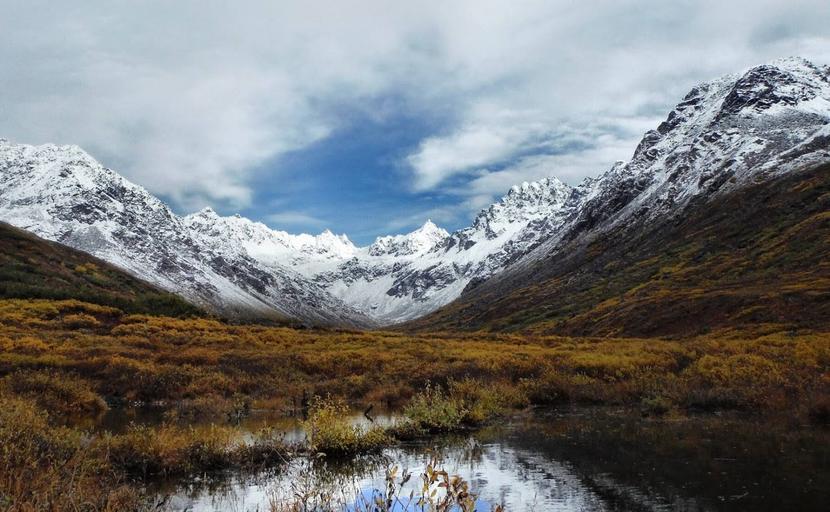MAKE A MEME
View Large Image

| View Original: | Alaska_Interior.jpg (1476x911) | |||
| Download: | Original | Medium | Small | Thumb |
| Courtesy of: | www.flickr.com | More Like This | ||
| Keywords: usgs science alaska landscape mountains climate climate change climatechange outdoor mountain hill mountainside The interior part of Alaska receives the same amount of annual precipitation as Tucson, Arizona, but its landscape is far from desert-like – picture vast spruce forests punctuated by streams and fields of wildflowers. This abundance is made possible by the ways in which water is stored on the landscape (often in solid form). For example, snowpack from the winter slowly melts over the spring and summer to continually rehydrate the soil. As climate change brings about warmer temperatures and less snowfall, scientists at the Alaska Climate Science Center, managed by the USGS, warn that drought has the potential to seriously disrupt vegetation, wildlife habitat and migration, and the traditional hunting and gathering activities of native people…not to mention increasing the frequency and extent of wildfires. Read more: go.usa.gov/cmnPh. Photo credit: Shawn Carter, USGS. The interior part of Alaska receives the same amount of annual precipitation as Tucson, Arizona, but its landscape is far from desert-like – picture vast spruce forests punctuated by streams and fields of wildflowers. This abundance is made possible by the ways in which water is stored on the landscape (often in solid form). For example, snowpack from the winter slowly melts over the spring and summer to continually rehydrate the soil. As climate change brings about warmer temperatures and less snowfall, scientists at the Alaska Climate Science Center, managed by the USGS, warn that drought has the potential to seriously disrupt vegetation, wildlife habitat and migration, and the traditional hunting and gathering activities of native people…not to mention increasing the frequency and extent of wildfires. Read more: go.usa.gov/cmnPh. Photo credit: Shawn Carter, USGS. | ||||